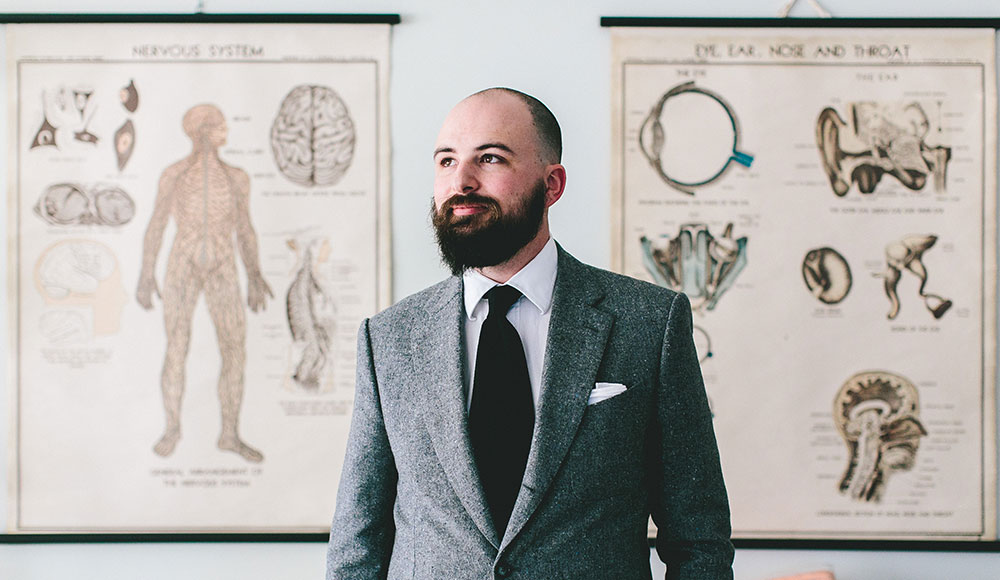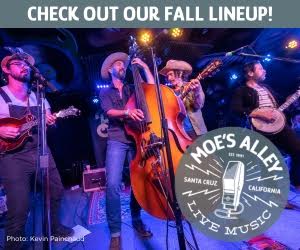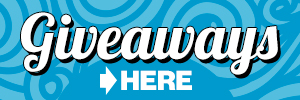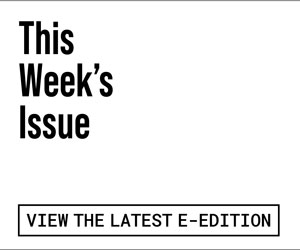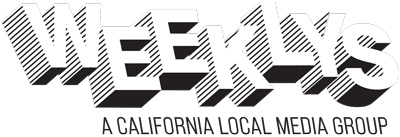Jesse Thorn, creator and host of the NPR show Bullseye, which runs on more than 100 stations around the country, says Santa Cruz’s legendary tolerance of weirdness was a big help when he launched the program 25 years ago. So he is bringing his 25th-anniversary celebration to our little beach-and-college-town on Saturday, Nov. 1—the tour’s only other two stops are Los Angeles and New York.
Bullseye is also released as a podcast—Thorn was one of the world’s first podcasters, and now runs a pod network, Maximum Fun, which distributes more than 30 shows. His own has great breadth and pull: Over the past couple months, he’s interviewed Elizabeth Gilbert (Eat, Pray, Love), Sonia Manzano (Maria on Sesame Street) Ghostface Killa (Wu-Tang Clan) and three comic actors who need no identification: Bob Odenkirk, Jason Segel and Nick Offerman.
The Santa Cruz show will feature Adam Scott (Parks and Recreation; Severance) Boots Riley (The Coup; Sorry to Bother You), Glynn Washington (Snap Judgment) and Santa Cruz’s own The Mermen.
This conversation has been edited for length and clarity.
Not all of our readers will know that you launched your first show, The Sound of Young America, at KZSC when you were a student at UC Santa Cruz. And you became “Jesse Thorn—America’s Radio Sweetheart.” What inspired you?
JESSE THORN: What inspired me to get into radio was that I was always a public radio listener—that was what was on in my house. And when This American Life and Roman Mars from 99% Invisible’soriginal show, which was called Invisible Ink, were running on public radio, it sort of suggested to me that maybe there was a place in public radio for someone like me. You know, they’re both Gen Xers, but it was simply that they were making art on the radio.
And the truth is that I am the youngest person who didn’t have access to video. I’m an elder millennial, and when I got to college, a digital video camera that was worth using still cost $5,000. If you were a film major at UC Santa Cruz, you got to use a camera for one semester during your senior year. In contrast, one day I visited the radio station on a campus tour and realized that the person who was talking into the microphone was also running the board. And that up was louder and down was quieter. And that seemed within my means. And I feel really lucky that KZSC was not just a positive and supportive environment, but also a real radio station that people actually listened to.
My wife had a college radio show—she went to Sarah Lawrence in New York—and it ran on the cable television system on campus. Whereas when we were broadcasting on KZSC during drive time, there were thousands of people listening.
Definitely. KZSC was already kind of an institution.
Yes. And that meant that as soon as we started doing it, we felt responsible to make something worth listening to. I mean, we were getting up at 6:30 in the morning and walking across campus, because the campus buses didn’t run that early, to get to our 7:30am show. But we took that time slot because we knew that people would be listening from 7:30 to 8:30 in the morning. That’s when people listen to the radio.
So I certainly have heroes and inspirations in broadcasting—people like Ira and Terry Gross and David Letterman—but I also think that it was the medium that was available to us. I bought a This American Life How to Make Radio comic book for $6 and taught myself to use a program called Cool Edit. That was 1999. Got my mom’s cassette deck from her stereo from the ’70s that had a shoulder strap and bought a microphone at a thrift store, And we were off to the races.
That reveals a lot of stuff, including some pretty serious ambition.
Was it ambition? Or was it fear of embarrassment? There’s no question that we wanted to do things. We had started an improv group that still exists at UCSC; we started this radio show; but I didn’t imagine that one day I would be on NPR. I just thought if I am going to be on the radio and a thousand people or 5,000 people are gonna be listening, I should work really hard and try not to embarrass myself and see if I can make something good.
I hear that. And I did hear you say earlier that when you heard Ira on NPR, you thought maybe you could or should be too.
Well, the reason I wanted to go into public radio was because commercial radio sucked so hard. There were a few people whose talent was so incandescent that they transcended the limitations of the business, like Howard Stern or whatever. And there were some very talented people using their talent for evil, like Rush Limbaugh.
But for the most part, commercial radio was morning zoos that weren’t very good. There was no one doing actual comedy on the radio at all, I mean, when was the Firesign Theater—1976 or something? So public radio was the one place that was making something that, to me, was worth listening to.
You have invited Santa Cruz’s favorite son, Adam Scott, to join you for your anniversary special at Kuumbwa on Nov. 1. I listened back to a pod that you made with Adam a few months ago (and I want to suggest to Good Times’ readers that they go find it, because hearing you two guys talk about Adam working as a “candy boy” at Marini’s, pulling saltwater taffy on the Boardwalk, is priceless). And I want to ask you: What’s the weirdest thing about Santa Cruz, or one thing about Santa Cruz, that influenced you while you were here, that stays with you?
Well, there are things about KZSC that will live with me forever. There was a guy named Phineas—I don’t even know that he hosted a show on the station, and he didn’t go to UC Santa Cruz; he went to Cabrillo and he worked at the Food Bin. And he would always be sitting on the sofa at KZSC eating almond butter or cashew butter out of a yogurt container with a spoon. And I think it goes without saying that he was a white guy with dreadlocks.
The first time we went on the air, a woman whose name was Clitia the Folk Goddess, who had another show on the station—and was an adult woman!—called in and told me, as I sat at the console two-thirds of the way through my first show, that Jordan and I represented everything that was wrong with KZSC.
I remember Clitia. Was this an on-air call?
We were on air at the time, but I don’t think she was; I think a song was playing when she called in. She literally said that to me, not to the programming committee or something. But the thing that I remember most vividly about my experience at KZSC was that no matter how ridiculous a thing we were doing, everyone thought it was a great idea.
I guess except for one time, during a fundraising drive. Jordan and I found out that the station had remote broadcasting equipment. We had no idea until one day somebody said, “I think there’s some remote broadcasting equipment in that closet.” So we got a friend of ours to run the board in the studio and someone to point the directional antenna down to the base of campus, and we set up at the base of campus in our underpants and shoes. And we did our whole show from the base of campus in our underpants.
And one of our guests was my now real-life adult friend, Marc Maron, who went on to revolutionize podcasting. At the time he was just on the phone from New York because he was probably doing some shows at Cobb’s in San Francisco, or had an album out or something. But we were down there at the base of campus interviewing him through this 1970s remote broadcasting equipment while cars drove by and honked at us because of how hunky we were, which we were very hunky. And I loved the fact that people just thought that was fine and were just like, “Yeah, do that. Sure. Why not?”
Well the fact that Marc Maron—who just ended his 16-year podcasting run last week by interviewing Barack Obama—happened to be your guest while you were doing this unforgettable prank is either a weird coincidence or proof that the universe is magic.
The Bullseye with Jesse Thorn 25th Anniversary Celebration takes place at 8pm, Nov. 1, at Kuumbwa Jazz Center, 320 Cedar St., Santa Cruz; $41.15 kuumbwajazz.org


